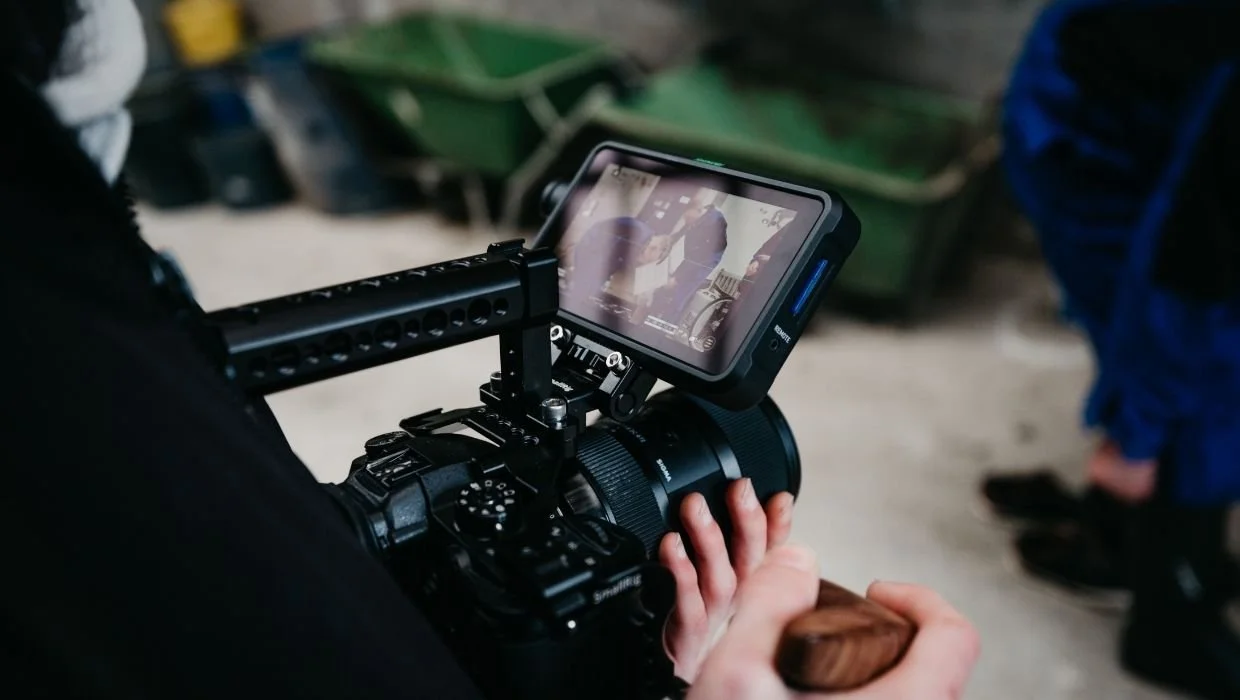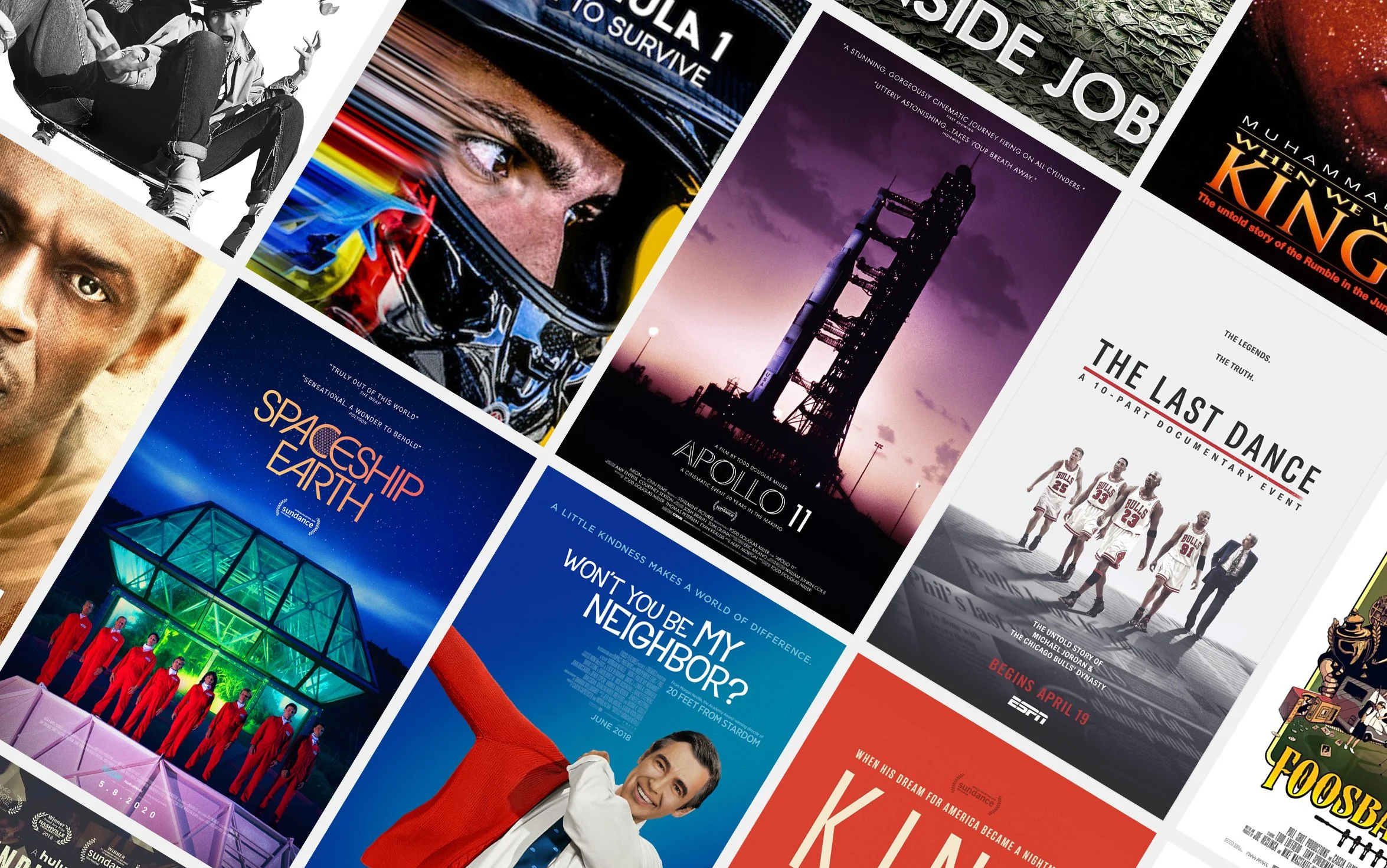What Is A Documentary?
From Into the Deep: The Submarine Murder Case to Netflix’s Making A Murderer, documentaries have been an important part of film culture. Documentaries give us a peek into worlds we may not have known about otherwise. They open our eyes to new experiences and perspectives and empower us with knowledge and information. But what is a documentary? Is a documentary a movie? What defines a documentary? And how are documentaries made?
In this blog post, we’ll explore the meaning of documentaries as informative movies, their history, and the creative process behind them.
The Meaning of Documentaries
So, whats a documentary? And what’s the comparison between film vs documentary? A documentary is a non-fictional film that tells a true story. The importance of documentary is to inform, educate, and enlighten viewers about an important topic or event. Unlike fictional films, documentaries are based on real-life events, real people, and real issues.
Documentaries can take many forms, including biographies, historical accounts, wildlife, current events, and social issues. They can be produced for television, theatres, home viewing, or online streaming.
The History of Documentaries
Documentaries have been around for over a century. Beginning in the early 1900s, documentaries were a form of newsreels that were shown before feature films. These newsreels contained footage of events such as wars, disasters, and sporting events.
By the 1920s, documentaries expanded their scope and started covering social issues like poverty and racial injustice. In the 1930s, documentaries were used as propaganda tools to promote political or ideological agendas.
During the 1960s and 1970s, documentaries became more self-reflective and experimental, exploring personal narratives and artistic expression. Today, documentaries have become a creative and entertaining form of storytelling.
The Creative Process Behind Documentaries
So, how to start a documentary? And how to do a documentary? The creative process of making a documentary can be complex and time-consuming. It begins with a concept or an idea for the film’s subject matter. Is it going to be an informational documentary? Or one of the other six genres discussed below. The filmmakers then conduct research, gather information, and plan interviews and locations to shoot footage.
Once the shooting is complete, the real work of editing begins. Editing is where the story comes together. Filmmakers manipulate footage and use sound and visual effects to create a cohesive narrative.
The editing process can take months or even years, depending on the complexity of the project. Documentaries also require a strong creative team, including directors, editors, producers, and sound technicians.
Key Features of a Documentary
A Clear and Compelling Narrative
So, why are documentaries made? A straightforward narrative is the foundation of your documentary as it connects the audience emotionally and intellectually to the story. A compelling storyline captures an audience's attention and keeps them interested. The narration must be structured to allow your audience to understand the background and the main issues you’re addressing in the documentary without getting lost in the details. You may need to create a storyboard or a script to guide you through your storyline to keep you focused.
Authenticity and Credibility
An excellent documentary must be authentic and credible. Authenticity should be maintained throughout the film, from the story, characters, dialogue, and setting. You must also present an unbiased view that objectively offers the subject matter. Authenticity also means getting close enough to the characters to understand their motivations and reasons for their beliefs and actions.
Visual Significance
Most of the documentary's impact comes from the visual components. Therefore, the visual significance of the documentary should be supported by high-quality cinematography that captures the mood and feeling of the story. You should choose visual modes that you believe will best convey your message to the audience, whether black and white or animation. It would help to employ supplementary visuals like archive footage, still images, and graphics to enhance the story's depth and meaning.
A Powerful Soundtrack
A powerful soundtrack is essential to the documentary’s ethos, complementing the story, setting the tone, and building an emotional connection with the audience. You can choose music that is relevant to your story and subject matter, which may involve connecting with a composer and working to create a bespoke soundtrack. Alternatively, you can use tracks by existing artists that reflect the mood of your film.
Innovative Editing
Editing involves piecing together a story to bring out the film’s flow, drama, and emotion. Innovative editing consists of a mastery of the technical aspects of combining sounds, visuals, and narration to create a coherent film. This includes working with the timeline, cutting and splicing footage together, and finalizing the pace and tone of your documentary.
Techniques Used in Documentaries
Filmmakers use a wide range of techniques to make documentaries engaging, informative, and emotionally resonant. Some of the most common techniques include:
Interviews - filmmakers can interview experts, witnesses, or people directly involved in the subject of the film to provide different perspectives and insights.
Archival footage - filmmakers can use historical footage, news clips, or other existing media to provide context and texture to the story.
Reenactments - filmmakers can recreate scenes or events using actors to illustrate or supplement the story.
Visual metaphors - filmmakers can use images or symbols to convey abstract concepts or emotions.
Music - filmmakers can use music to enhance mood, evoke emotions, or underscore important moments in the story.
Advantages of Watching Documentaries
Watching documentaries has several advantages. They can help us learn about a new subject or issue, and provide us with a deeper understanding of the world around us.
One of the defining features of a documentary is its commitment to presenting factual information and telling a true story. Unlike narrative films, which often take creative liberties with the truth in the name of entertainment, documentaries strive for objective truth and accuracy. That said, documentaries can still be subjective, often reflecting the filmmaker's own biases, perspectives, and opinions.
Despite their commitment to accuracy, documentaries are not simply dry presentations of facts and figures. They can be emotional, engaging, and even entertaining, telling stories in a way that resonates with audiences and invites them to think critically about the world around them. The best documentaries manage to strike a balance between informing and entertaining, leaving audiences both informed and inspired.
Another important characteristic of many documentaries is their commitment to giving voice to underrepresented communities and issues. Whether it's shining a spotlight on a particular social issue or telling the story of an individual or community that has been overlooked by mainstream media, documentaries have the power to amplify otherwise unheard voices and open up new avenues of conversation and understanding.
They are also an effective tool for social change. Documentaries can spark conversations about important issues, and motivate us to take action. Moreover, documentaries can be entertaining and engaging, offering insight and connection to issues that touch us all.
An Overview of Documentary Genres
Documentaries have been a cornerstone of the film industry for decades, with their ability to inform and educate audiences about a wide range of topics. However, not all documentaries are created equal, as film makers approach the documentary genre with different aims and styles.
Expository Documentary
As the name suggests, expository documentaries aim to explain or inform the audience about a particular topic, often using a combination of interviews, narration, and archival footage.
One of the most famous examples of this genre is Michael Moore's 2004 film Fahrenheit 9/11, which examines the aftermath of the September 11 attacks and the political climate surrounding them. Another well-known example is Al Gore's An Inconvenient Truth (2006), which explores the issue of climate change.
Observational Documentary
These films attempt to provide a candid and unobtrusive look at the subject matter, often without any voiceover or overt narrative structure. One of the most famous examples of this genre is Jean Rouch and Edgar Morin’s 1961 film Chronicle of a Summer, which examines the lives of Parisians in the summer of 1960 through a series of candid interviews and conversations.
Another notable example is the Maysles brothers’ 1975 film Grey Gardens, which explores the lives of two eccentric relatives of Jackie Kennedy Onassis living in a dilapidated mansion in the Hamptons.
Participatory Documentary
These films actively involve the filmmaker in the subject matter, often incorporating their own experiences or perspectives into the narrative. One example of this genre is Ross McElwee’s 1986 film Sherman’s March, which began as a project about the American Civil War before morphing into a more personal exploration of the filmmaker’s own romantic relationships.
Another notable example is Agnès Varda’s 2000 film The Gleaners and I, which examines the practice of gleaning (the act of collecting leftover crops from farmers’ fields) and incorporates Varda’s own musings on ageing and creativity.
Reflexive Documentary
These films explore the nature of documentary itself, often commenting on the genre’s own conventions and constructions. One of the most famous examples of this genre is Dziga Vertov’s 1929 film Man with a Movie Camera, which employs experimental techniques such as split screens and jump cuts to highlight the artifice of documentary filmmaking.
Another notable example is Errol Morris’ 1981 film Gates of Heaven, which explores the world of pet cemeteries while commenting on the nature of storytelling and the role of the filmmaker in shaping the narrative.
Poetic Documentary
Poetic documentaries tend to be more subjective than other genres, with a focus on mood, impression, and atmosphere rather than hard facts. One example of this genre is Chris Marker’s 1962 film La Jetée, which uses a series of still images to tell the story of a man sent back in time to prevent a devastating war. Another notable example is Godfrey Reggio’s 1982 film Koyaanisqatsi, which uses stunning time-lapse footage to explore the relationship between humans, nature, and technology.
Documentary film making is a fascinating and rewarding art form that continues to evolve and innovate. By exploring the different genres of documentaries, we can gain a greater appreciation for the breadth and diversity of this dynamic genre. Whether you prefer the objective style of expository documentaries or the subjective approach of poetic documentaries, there’s something for every film lover in the world of non-fiction filmmaking.
Conclusion
Documentaries are an important aspect of our cinematic culture. They offer diverse perspectives and knowledge, and empower us to change the world around us. By understanding what documentaries are, how they are made and their history, we can gain greater appreciation and insight into the art of documentary filmmaking.
So, the next time you watch a great documentary, take a moment to appreciate the hours of creativity, research, and collaboration that went into creating it.
More from Factual America:
Inconvenient Truth, Al Gore and Climate Change
10 Best Documentaries Of The 1970s
10 Best Documentaries Of The 1960s
What Makes a Good Documentary Film?
Make A Living As A Documentary Filmmaker
10 Best Errol Morris Documentaries: A Definitive Ranking for Film Enthusiasts
The State of Texas vs. Melissa: The Death Penalty's Problems
7 Best Michael Moore Documentaries: Expert Insights and Rankings
A Comprehensive Guide to Understanding the Three Act Structure in Documentary Films
21 Best Historical Documentaries
Texas Film Industry Tax Incentives: A Comprehensive Overview
Best Documentaries about Climate Change: Top Films for Environmental Awareness
Best Documentaries About Making Movies: Unveiling the Magic Behind the Scenes
Documentary Grey Gardens (1975): A Timeless Cinematic Masterpiece Explored
11 Must Watch Death Row Documentaries
How to Pitch a Documentary to Netflix Buyers
#documentary filmmakers #documentary filmmaker #documentary film production #factual film #documentary form #american film critic #narrative film #fiction film #nonfiction film







